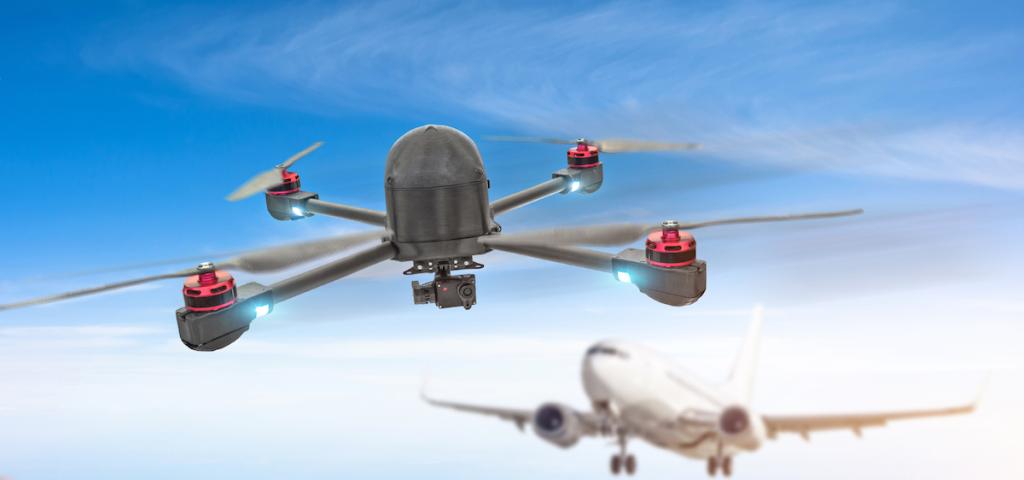
Swarm Technology – Pushing the Barriers of Autonomous Systems

These are not just any ordinary unmanned aircraft systems (UAS). They fly together. Better still, they swarm together, for any Star Trek fans out there. They can also team up with a manned aircraft and act like a force multiplier. This kind of unmanned aircraft can bring significant improvements to almost every area of national and homeland security, from enhanced surveillance to missile defense. The technological breakthroughs powering this revolution show the great progress that autonomous systems have made, and Wind River has been there every step of the way.
The Whole Is Greater than the Sum of Its Parts
Whether it comes in numbers or diversity, swarm capability has been on the forefront of recent prototypes. From testing a swarm of one thousand drones, to prototyping a manned-unmanned teaming (MUT), everything revolves around managing big amounts of data. The bigger the group, the bigger the workload that a system needs to process and the greater the risk of jamming. The more diverse the group, the more challenging establishing clear communication and synchronizing behavior and decisions. Real-time capabilities and safety and security requirements come naturally into play.
Leading aerospace suppliers such as Lockheed Martin and Airbus have created prototypes for this technology. The latest demonstration from Airbus included five Airbus-built Do-DT25 target drones controlled by a manned command and control (C2) aircraft.The mission showed a series of synchronized and responsive actions, including live-interaction with the military spectators, defining additional threats or POIs on the fly. For this project, Airbus used new and legacy IP – up-to-date COTS components alongside previously developed ARINC 653 mission software.
Bringing Technology Forward with Open Architectures
What does it take to achieve coordinated actions between autonomic devices? From a system perspective, all devices must be capable to yield the same kind of deterministic response when it comes to navigation, flight control and communication. This is done across communication protocols, hardware platforms and applications. The same flight control and navigation applications must work side by side with new compute vision and image processing applications. This includes new artificial intelligence (AI) algorithms that enable swarming, autonomous flight and automated data-processing and exploitation. Lastly, if the drones cannot share information due to jamming, the swarm cannot function as a coherent whole. So protecting data at rest and data in transit becomes imperative.
New and legacy applications need to work together, from up-to-date COTS components to previously developed mission software. Re-using IP lowers the time and cost of the program. ARINC 653, POSIX®, or FACE™ applications need to fit onto different hardware platforms and operating systems such as Linux, VxWorks®, and others. This may mean re-using the same ARINC 653 software from a full-scale mission computer on a small UAV that uses rugged computers.
Technology needs to adapt to different projects, different hardware, different compilers, and different restrictions. Modular and open architectures, standard compliance, support for unmodified guest operating systems with mixed-criticality applications is the proven way forward. This helps system suppliers through continued upgrades to legacy platforms that are already in operation. Learn more about this in Wind River’s webinar – Anatomy of Modern Systems: Where Safety-Critical and General Purpose Applications Co-exist
Investment and New Use Cases
A recent market forecast for unmanned aerial systems (UAS) highlights that UAS technology will continue to expand its presence, with new capabilities helping achieve the 24/7 battlefield surveillance. This includes investing into smaller, more lightweight drones for tactical missions and MUT technology.
Swarm technology lends itself well to more than just one use case. Future use cases can incorporate both air and sea drones, large or small. Assembling a diverse set of drones creates a whole that is more capable than the individual parts. Together they could increase situational awareness, operate across domain, enhance decision-making and mission effectiveness.
It may sound like science fiction, but technologies enabling the swarm ships epic scene from Star Trek are already here and Wind River technology is leading the evolution from automatic to autonomous systems

